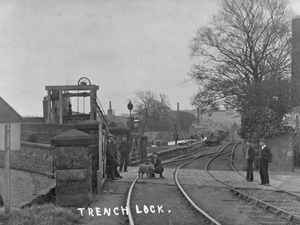Shropshire facts: World firsts and England's coldest ever temperature
Shropshire, with its rolling hills and pretty towns, tends to understate its importance. But Salop has many claims to fame, from ancient history right up to the Industrial Revolution. Here are just a few facts worth noting:
The first
Shropshire is sandwiched between two world heritage sites, Ironbridge Gorge and the Pontcysyllte Aqueduct. Ironbridge represents the birth of the Industrial Revolution, its centre-iece is the first cast iron bridge opened in 1781.
The county is also home to the world's first skyscraper. While it may not look much, Ditherington flax mill, on the outskirts of Shrewsbury, was the first multi-storey iron-framed building in the world – and therefore the forerunner of every skyscraper and tower block in the world. Built in 1797, it's currently awaiting redevelopment and is one of 660 listed buildings in the town.
Charles Darwin is Shrewsbury’s most famous son was the author of 'The Origin of Species' which changed views on evolution for ever. He was born in Shrewsbury on 12 February 1809.
The first-ever modern day Olympic Games were held in Shropshire. To be precise, Much Wenlock in 1850. The brainchild of Dr Brookes, the games were originally designed to promote the moral, physical and intellectual improvement of the inhabitants of the town and its neighbourhood. Their success was a major factor in the creation of the international Olympic Games in 1896.
The tallest
Shrewsbury houses the tallest Doric Column in England. Standing at 133ft 6 in, it commemorates Rowland Hill, 1st Viscount Hill, with a 17ft tall statue standing on the top of the column. Built between 1814 and 1816, the column’s diameter is 2ft wider than Nelson’s Column, and, not including the pedestal, is 15ft higher.
The prettiest
The Shropshire Hills are designated as an area of outstanding natural beauty (AONB). Even at night it is beautiful, the county enjoys Dark Skies status because it has perfect conditions for those who enjoy star gazing.
The oldest
Shropshire can boast 32 castles and 25 hillforts. The heart of Henry VIII’s older brother Arthur is buried in St Laurence Church in historic Ludlow beneath the chancel. The rest of his body was interred at Worcester Cathedral.
Shropshire, particularly the south of the county, is something of a magnet for geologists. There are more rocks of different ages here than any area of similar size in the world (dating from 700 to 200 million years ago), and places like Ludlow and Wenlock Edge have even given their names to geological periods. The world's oldest known complete fossil was also discovered in Shropshire at Caradoc.
The castle keep at Bridgnorth, which dates from 1160, leans at a seventeen-degree angle. This is three times further than the Leaning Tower of Pisa.
The coldest
Newport in Shropshire recorded the coldest temperature ever in England on 10th January 1982, a pretty chilly –26C (15F)





